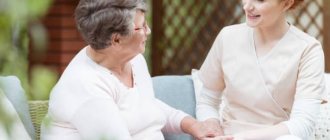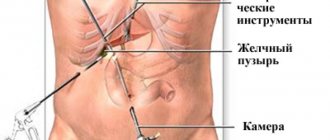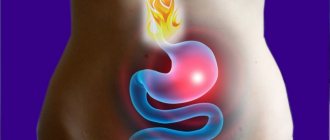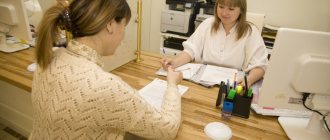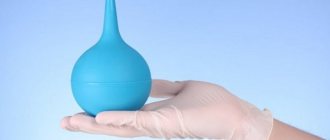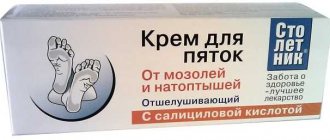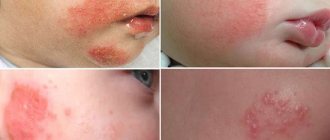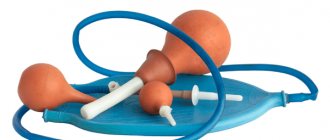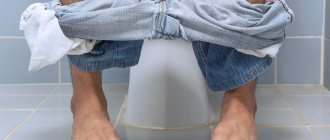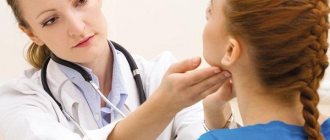A stroke always attacks unexpectedly - this disease, like a bolt from the blue, can penetrate into any home, any family. After the first shock has subsided, first aid has been provided and the phase of coming to terms with an unexpected misfortune has passed, a tough and important question arises: how to organize the rehabilitation process?
Main areas of influence during rehabilitation after stroke
Out of habit, new drugs first grab all the attention; medicine seems to be the most important way to alleviate a person’s condition, get him back on his feet, return him to normal life, to the ability to self-care.
In practice, the rehabilitation of patients after a stroke consists of a huge complex complex that combines pills and many other procedures: massages, gymnastics, muscle development, vision and hearing training and much more.
Most often, the most important actions take place after discharge from the hospital. This article is devoted to an important topic - it examines how rehabilitation after a stroke should be properly organized at home. Contrary to popular belief that the main thing is expensive modern equipment, the results of treatment at home are often much more impressive.
Recovery upon return
How to prevent complications when recovering from a stroke? In acute cerebrovascular accident, the nervous tissue in the affected area dies . There is a dysfunction (speech, motor, visual). But thanks to the phenomenon of neuroplasticity, the nervous system transfers the performance of these functions to other cells.
For transfer to occur correctly, neurorehabilitation is necessary . Otherwise, there is a possibility that the processes will go in a different direction, resulting in the formation of compensatory movements that will cause inconvenience and worsen the quality of life.
The recovery period depends on the type of stroke.
| Type of stroke | Manifestations | Duration of recovery, months | |
| partial | complete | ||
| Ischemic | minimal (mild paralysis of limbs, facial muscles, impaired vision, coordination) | 1–2 | 2–3 |
| Any kind | severe (severe paralysis, persistent impairment of coordination) | up to 6 (self-service option) | happens rarely, the process lasts for years |
| Severe strokes (ischemic and hemorrhagic) | paralysis of one side of the body, other defects | 12–24 (possibility to sit) | impossible |
There are three levels of recovery:
- true - return to the original state;
- compensatory - transfer of functions from affected structures to healthy ones;
- readaptation - with a large lesion and the impossibility of compensating for the impaired function.
The recovery period is divided into the following periods:
- early - up to six months of illness;
- late - six months to a year;
- residual - after a year.
Restoration of speech, psyche, and social rehabilitation takes longer.
The principles of rehabilitation are:
- early onset;
- systematic;
- duration;
- involvement of doctors and loved ones in the process.
Specialists from various fields are working to return to normal life - neurologists, therapists, speech therapists, physiotherapists, psychologists, etc.
Here is a video about methods of rehabilitation after a stroke and recovery at home:
Coordination problems
When the cerebellum is damaged, coordination disorders develop - accuracy and consistency of movements. They can manifest themselves in different ways: impaired stability when standing or walking, impaired coordination of movements, tremor. A number of patients experience severe impairment of walking function due to damage to the cerebellum. In this case, the strength in the limbs can be completely preserved, the range of movements is full, but when performing purposeful actions (walking, standing up, trying to independently bring a spoon to the mouth), significant impairments are revealed.
Rehabilitation of such patients consists of motor activation, balance training, motor skills training, and fine motor skills training. A large role in solving this problem is given to therapeutic exercises. A special set of exercises is used aimed at:
- Increased precision of movements
- Improved coordination of movements
- Balance training and walking training
- Training fine motor skills and various hand grips
For concomitant dizziness, drug therapy is used to improve blood circulation in the brain and suppress the excitability of the vestibular centers. The drug, dose and dosage regimen are prescribed exclusively by a doctor.
Caring for bedridden patients at home
Even before the patient arrives, the following items should be prepared:
- vessel;
- diapers for adults;
- absorbent diapers;
- anti-decubitus circles, mattresses;
- a pole near the bed or reins near the back;
- soft carpet near the bed;
- chair, etc.
Every day, 2 times a day, the patient is washed, teeth are brushed, mucous membranes are washed, and ears are cleaned 1-2 times a week.
To prevent bedsores from forming, the bed is straightened, leaving no folds . The body is allowed to be lubricated with a special product prepared from 200 ml of vodka, 1 tbsp. shampoo, 1 liter of water. Every 2–3 hours the patient is turned on his side.
If chewing and swallowing functions are lost, food is pureed and fed through cocktail sticks. Canned children's food is used as an alternative food.
Do not force feed - this causes vomiting. If the appetite is poor, give your favorite dishes (as part of the prescribed diet). Portions are small, meals are 6 times a day. Before eating, the patient's body is given a semi-sitting position.
A common occurrence is urinary incontinence or retention .
In the latter case, there is a need for catheterization. For incontinence, when it is impossible to regulate the process with medication or other methods, sanitary pads and diapers are used.
Recommendations for bedridden patients
If the patient is able to move independently, then the first action is sitting.
The first days - for a few minutes, the time is gradually increased.
The next stage is standing, then walking , mastering the transfer of body weight from one leg to the other.
Walking skills return gradually. To prevent the foot from turning in, wear high shoes.
You need to move with support. A cane or a special attachment with 3-4 legs is used as a means of support.
Diet and food
The menu includes the following products:
- vegetable oils - rapeseed, soybean, olive, sunflower (no more than 120 g per day);
- seafood - at least 2 times a week;
- vegetables, fruits rich in fiber, folic acid - from 400 g daily;
- purified water - up to 2 liters per day (if there are no contraindications).
Blueberries , which contain a large amount of antioxidants, and bananas, rich in potassium, have a beneficial effect on the body.
It is important that the patient receives enough folic acid, vitamins A, E, C, which help overcome the consequences of the disease and reduce the risk of relapse.
Meat, fish, dairy products are consumed in moderation , low-fat dietary varieties. Products are steamed, stewed or boiled. The layer of fat from the surface is removed. If you cook these products correctly, the fat content is reduced by half.
It is useful to eat legumes - a rich source of folic acid. Meat and potatoes (baked only) are given no more than 2-3 times a week.
The diet includes grains - brown rice, oatmeal, bran, durum wheat .
Smoked meats, spicy and hot dishes are removed from the menu . Bread and other baked goods, sweet, fatty desserts, and animal fats are contraindicated.
These foods raise cholesterol. Salt is eliminated or reduced to a minimum level.
Alcohol is prohibited. A doctor may recommend moderate consumption of natural red wine , but exceeding the prescribed dose is life-threatening.
Rejection of bad habits
During the rehabilitation period, one of the main stages on the path to recovery will be giving up bad habits. This is a mandatory condition that will protect an already weakened body from the negative effects of poisons and toxins . So, the patient needs to give up such habits as:
- Smoking and drinking alcohol (even in small quantities);
- Addiction to strong tea and coffee;
- Eating fried, salty, fatty and sweet foods.
Physical activity, exercise therapy, sex life
The first two weeks after discharge, if there are no other appointments, physical activity consists only of changing body position. Then they move on to passive loads , the purpose of which is to relax and prepare the muscles for work.
When the patient moves, physiotherapeutic methods are applied to him - massage, manual therapy, heat therapy (ozokerite and paraffin applications), magnetic therapy, laser therapy, exercises on simulators, individual and group gymnastics classes.
The day begins with a warm-up - shallow squats, stretching, bending. It is recommended to alternate loads - light jogging, walking, exercise on an exercise bike.
The program is compiled individually . You cannot change the regimen on your own, as a recurrent stroke is possible.
Exercises that increase muscle spasticity - squeezing a ring or ball - are prohibited. Sexual desire returns approximately 3 months after the attack. In some cases, the disease provokes an increase in sexual desire , since the hypothalamus and the center responsible for the release of hormones work differently.
There are cases where a person returned to an active sexual life even before speech returned to him. But no matter what scenario occurs, consult a doctor before starting sexual activity.
Elena Malysheva’s program contains interesting information about how to restore movement after an illness:
Medical control and treatment
When treating stroke, the following groups of drugs are prescribed::
- for better blood supply to the brain (Cavinton, Pentoxifylline, Cerebrolysin, aspirin-containing drugs);
- to activate metabolism in brain cells (Ginkor Fort, Solcoseryl, Ceraxon, Actovegin, etc.);
- nootropics - stimulants that affect higher brain functions (Noofen, Piracetam, Lucetam);
- combination medications with several active ingredients (Phesam, Thiocetam, Neuro-norm);
- anticoagulants - thin the blood and prevent the formation of blood clots (Coumadin, Heparin);
- others - to reduce the excitability of the nervous system, relieve muscle tension (muscle relaxants), traditional medicine and herbal teas, antidepressants (Gidazepam, Adaptol).
All patients who have suffered a cerebral stroke are subject to dispensary observation by a neurologist .
Psychological support
Stroke has a negative impact on quality of life. Therefore, the likelihood of depression increases .
Those affected by the disease need communication, moral support, and contact with the outside world. These requirements persist even if such a person is not able to speak, but perceives speech by ear. Topics for conversation are varied - from children to politics. It is important for someone who is bedridden to hear that they will get better .
Patients find it difficult to tolerate dependence on other people, especially those who are free-spirited and independent.
Therefore, they may develop character traits such as grumpiness and irritability . With depression, any help can be rejected, including medical help. If contact is interrupted, the help of a psychologist or psychotherapist is necessary, as well as drug treatment with antidepressants.
It is prohibited to discuss his problems, negative consequences of the disease, or speech difficulties in the presence of the patient.
But at the same time, encouraging achievements, even if they are insignificant, has a great effect on self-esteem and well-being. Then recovery comes faster.
Relatives should also not forget about psychological relief . They are shown positive emotions, relaxation in the form of sports, meditation, massage, aromatherapy . Vitamin treatment may be required.
They will tell you how to recover psycho-emotionally here:
Features of female stroke
Women are more susceptible to stroke, take longer to recover and are more likely to die from its consequences.
Increase the risk of stroke in women:
- smoking;
- use of hormonal contraceptives (especially over the age of 30);
— hormone replacement therapy for menopausal disorders.
Atypical signs of female stroke:
- an attack of severe pain in one of the limbs;
- sudden attack of hiccups;
- an attack of severe nausea or abdominal pain;
- sudden fatigue;
- short-term loss of consciousness;
- sharp chest pain;
- attack of suffocation;
- suddenly increased heart rate;
- insomnia (insomnia).
Disability, group, return to work
According to statistics, only about 20% of victims of acute stroke return to work and normal life . Over the past five years, doctors have observed a trend in which the picture of severe cases of the disease is worsening.
The period of temporary disability is 3–6 months . When cerebral circulation is impaired, the dynamics of functional restoration and the state of the mental sphere are important.
If the prognosis is unfavorable, rehabilitation is slow, there are lesions in other organs, and in old age the patient is referred to the VTEK (medical and labor expert commission).
According to the norms (Federal Law No. 181-FZ), stroke survivors have the right to obtain disability registration. To do this, you need to obtain testimony from doctors.
There are disabilities of groups I, II, III . Every year, a patient who has been declared disabled undergoes re-examination.
The exception is men and women who have reached 60 and 55 years of age, respectively. An extraordinary re-examination is carried out if the condition has changed significantly.
After 3–6 months, with a favorable prognosis and rapid recovery, rational employment is allowed. When choosing a job, consider contraindications that increase the likelihood of relapse:
- increased nervous, psychological, physical stress;
- high air temperature and humidity;
- contact with neurotropic poisons (arsenic, lead, etc.).
With minor hemiparesis (paralysis of the muscles of half the body), work activity in which one hand is involved is possible. Among such specialties are rejector, quality control inspector, office work , etc.
What factors increase the risk of rupture of a cerebral aneurysm, the consequences and causes of its occurrence - find out all the details in a separate article. You can read about the symptoms and treatment of cerebral atherosclerosis here.
We will tell you separately how effective treatment of cerebral atherosclerosis is with folk remedies.
Forecast
Unfavorable factors for recovery:
- large lesion of the brain;
- location of the lesion in functionally important areas (for speech and motor functions);
- poor blood circulation around the affected area;
- advanced age;
- emotional disturbances.
Favorable prognostic factors include:
- early spontaneous recovery of functions;
- early start of restoration activities.
How to restore speech
Speech restoration is one of the most important tasks. Classes begin as soon as the condition stabilizes. A specialist - a speech therapist - is involved in the process .
Pets also take an active part in the process. To do this, for example, they read an ABC book so that the patient pronounces sounds, syllables, and entire words.
Speech when communicating is quiet, measured, calm. It is useful to ask the victim questions, sing with him, and learn tongue twisters. It is useful to retell texts he has heard.
If speech does not return to the patient for a long time, it may be necessary to learn sign language .
Watch a video about methods for restoring speech after a stroke:
Swallowing reflex
Another important problem is how to restore the swallowing reflex after a stroke, if it has been lost - after all, without it, normal functioning of the body, home routine and self-care is impossible!
A disease in which swallowing becomes impossible or difficult is called dysphagia. With this disease, the mobility of the tongue is limited, drooling may occur, and the muscles of the pharynx do not obey the owner well. As a result, the pharyngeal reflex is lost or insufficiently expressed.
In order for the function to be restored, you need to perform exercises related to restoring the subordination of the muscles of the oral cavity and pharynx. Tongue movements, chewing food and others. All this is possible only if the patient can raise his head and hold it in this position for at least a short time (in the case of a completely recumbent patient). If he cannot hold his head, first of all, attention should be paid to this factor.
Until the reflex is restored, you need to feed the patient special food that does not need to be chewed thoroughly, in small portions. In the most difficult situations, a probe may be used.
Return of vision
When the visual centers are damaged, visual function is completely restored by the cavity in approximately a third of cases of the disease.
In such conditions, eye gymnastics is useful . A popular exercise is with a pencil or other object, which is held at a distance of 40–43 cm from the patient’s eyes and moved alternately up and down, right and left. The patient is asked to follow the object without turning his head.
You can stock up on puzzles where you need to spell words by looking at a letter matrix. There are also special computer programs available on the network.
The best centers and sanatoriums
The best results are achieved if you entrust the care to professionals. Where is the best place to undergo rehabilitation after a stroke and what results can be achieved?
Rehabilitation centers provide comprehensive care, the patient is under the supervision of specialists around the clock.
Choosing an institution is an individual question, which also takes into account the financial factor. Here are a few institutions worth checking out.
Treatment and Rehabilitation Center of the Ministry of Health
The center was founded in 1918. Has a rehabilitation treatment department. It provides a full range of medical services - from the clinic to rehabilitation.
The medical staff has diagnostic equipment and a 24-hour neuro intensive care unit at their disposal.
Rehabilitation of patients who have suffered a stroke is carried out in the following areas:
- restoration and improvement of the vestibular apparatus;
- restoration of swallowing and larynx function;
- development of fine motor skills of the hands;
- restoration of memory, speech, ability to self-care;
- psychological and psychotherapeutic consultations;
- physiotherapy;
- physiotherapeutic procedures.
Rehabilitation center in Sestroretsk
The center is located in a picturesque resort town, half an hour from St. Petersburg . Created on the basis of a hospital.
Physiotherapists work here, there is a gym with robotic equipment, and a swimming pool . A speech therapist works with patients. Patients who move independently can live not in a rehabilitation center, but rent housing nearby.
Adelie Center (Slovakia)
The clinic specializes in rehabilitation after stroke, as well as treatment of children with cerebral palsy . The center is located in the city of Piestany, a famous health resort.
The rehabilitation program is designed with the expectation that each method enhances the effect of the other.
An Adele suit is used for treatment.
The suit creates a load on the musculoskeletal system and helps to correct postures and movement.
A wide range of physiotherapeutic procedures is used - massage, manual therapy, mud therapy, mechanical hippotherapy and others.
Sheba State Hospital (Israel)
The hospital is located in the city of Ramat Gan, near Tel Aviv. Rehabilitation is carried out in the following areas:
- physiotherapy;
- occupational therapy;
- speech therapy - restores speech skills and understanding of words addressed to the patient;
- psychology, neuropsychology;
- psychiatry;
- rehabilitation science.
According to statistics from the Sheba Clinic, after completing the course of treatment, 90% of patients fully or partially restore their mobility skills .
Swallowing disorders
Dysphagia is a violation of the act of swallowing, accompanied by choking when taking liquid or solid food.
This problem is very relevant for patients who have suffered a stroke, but it is not always given enough attention. A condition when a patient does not swallow after a stroke or swallows with difficulty is dangerous with a number of complications, which will be discussed below.
When the swallowing center is damaged, dysphagia of varying degrees occurs and requires different measures to correct the disorder and ensure patient safety.
Swallowing assessment should be performed in every stroke patient. In difficult cases, endoscopic techniques can be used to diagnose dysphagia.
In case of choking or any discomfort that occurs while drinking or eating, it is necessary to consult a specialist and select an individual diet.
The diet consists of a certain consistency of food suitable for a particular patient. When choking on the thickest food, a nasogastric tube is installed and feeding occurs only with its help. Special food mixtures are used. In this case, you should not take anything by mouth! The patient receives all food and drink only through a tube. In the absence of correction of the disorder, surgical techniques are used for a long time, and a gastrostomy tube is installed.
For moderate or mild swallowing disorders, the consistency of food and drink is selected and strictly observed. Soups can be in the form of cream or puree, drink in the form of jelly, if this consistency is suitable according to the results of an examination by a specialist. If necessary, special thickeners can be added to food to create a thicker consistency.
If you have dysphagia, you should never give regular liquid (water, tea, juice) without a thickener!
The great importance of this issue is associated with the possibility of drink and food getting into the respiratory tract - aspiration. Choking indicates aspiration.
Complications associated with dysphagia include:
- Tracheobronchitis
- Pneumonia
- Empyema of the lung
- Breathing problems
- Exhaustion, dehydration
- Sinusitis
In conditions of multiple stroke, especially if the patient’s condition does not allow him to actively move independently, the likelihood of inflammatory complications occurring is very high. That is why great attention should be paid to the nutrition of such patients. Cooking food for them should take into account the degree of dysphagia and be selected by a specialist.
Rehabilitation of patients with dysphagia does not have many possibilities. These include:
- Individual selection of food and liquid consistency.
- Exercises aimed at training the muscles of the pharynx, mouth, and larynx, which should be carried out by a specialist.
- Physiotherapy – electrical stimulation of the muscles involved in the act of swallowing.
The possibility of changing the consistency of food consumed is determined by the doctor or swallowing specialist, and not by the patient or his relatives!
Relapse Prevention Measures
The risk of recurrent stroke in the first 24 months is estimated at 4–14%.
Prevention of recurrent stroke begins in the first days of treatment and continues continuously. Its goal is adjustable factors.
With insufficient secondary prevention, the risk of secondary stroke increases. Every fourth case of acute cerebrovascular accidents is a recurrent stroke.
For the purpose of prevention, patients are prescribed preventive treatment:
- Revascularization of the carotid arteries - stenting of the carotid arteries and carotid endarterectomy.
- Control of vascular risk factors - reducing the concentration of cholesterol in the blood with statins, reducing the concentration of homocysteine in plasma by prescribing vitamin B.
- Antiplatelet therapy using aspirin, clopidogrel (Plavix), dipyridamole. Patients with atrial fibrillation, artificial heart valve, intraventricular thrombus, and other ailments fraught with cardioembolic stroke are prescribed warfarin.
The patient is limited in the number of cigarettes smoked or prohibited from smoking , as well as using drugs and abusing alcohol. Weight correction is necessary if the cause of the stroke is obesity. In the diet, reduce the proportion of foods containing fats and cholesterol, replacing them with fresh vegetables and fruits. Moderate physical activity is beneficial for the body.
Antihypertensive therapy (treatment of high blood pressure) is carried out with caution to prevent cerebral hypoperfusion (a decrease in cerebral blood flow below 50 mmHg).
Full recovery after stroke is possible. The main condition for this is strict compliance with medical instructions . And even in severe cases, it is possible to significantly improve the quality of life of the victim of the disease.
Help from a professional nurse
When choosing a caregiver you need to pay attention to:
- her physical health and strength;
- caregivers must be able to handle tools and devices to facilitate the caregiver’s work;
- must be patient, friendly, enduring, correct, and delicate.
The nurse should:
- provide care;
- organize a routine;
- carry out doctor's orders;
- prepare food and feed the patient;
- help with bathing and going to the toilet;
- do the cleaning.
